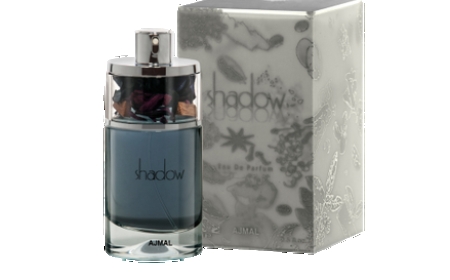How Many Mulligans Are Allowed in Golf: The Complete Guide for Beginners and Casual Players
Golf is a game of precision, patience, and sometimes, forgiveness. If you've ever played golf...

Golf is a game of precision, patience, and sometimes, forgiveness. If you've ever played golf, you've probably experienced that sinking feeling when your perfectly planned shot goes wildly off course. That's where the beloved "mulligan" comes into playa golf tradition that gives players a second chance to make things right.
But how many mulligans are allowed in golf? The answer isn't as straightforward as you might think. Let's explore everything you need to know about mulligans, from official rules to casual play etiquette.
What Exactly Is a Mulligan in Golf?
A mulligan is essentially a "do-over" shot in golf. When you hit a terrible shotmaybe your drive slices into the woods or your ball finds the water hazarda mulligan allows you to replay that shot without adding strokes to your scorecard.
Think of it as golf's version of hitting the reset button. By taking a Mulligan, you replay an opening tee shot, and no score is added to the scorecards, though different groups may have their own scoring preferences.
The concept is simple: you acknowledge that your first shot didn't represent your true ability, so you get another chance to show what you can really do.
The Official Rules: Are Mulligans Actually Legal?
Here's where things get interesting. The official golf rules don't allow what is a mulligan in golf, and this is a crucial point that many casual players don't realize.
According to the United States Golf Association (USGA) and the Royal and Ancient Golf Club of St. Andrews (R&A), mulligans have no place in official golf. A tradition mulligans may be, mulligans aren't, strictly speaking, legal.
In tournament play or any official round where you're tracking your handicap, mulligans are completely prohibited. The rules of golf are designed to test your skill under pressure, and giving yourself a second chance would undermine that fundamental principle.
However, this doesn't mean mulligans are universally banned from all golf. The key distinction lies between official play and casual rounds with friends.
Mulligans in Casual Golf: How Many Are Actually Allowed?
When you're playing a casual round with friends, the rules become much more flexible. In casual golf, typically one mulligan per round is allowed, but it varies based on the group's agreed-upon rules.
The Traditional Approach
The most commonly accepted practice is the "one mulligan per round" rule. This usually applies specifically to tee shots, and many groups limit it to the first tee shot of the day. This approach maintains some structure while still allowing for that crucial second chance when nerves get the better of you.
Popular Variations
Different groups have developed their own mulligan traditions:
The Front Nine/Back Nine System: It seems that with the approval of fellow players, it is allowed to apply one Mulligan per front nine and one per back nine. This gives players two mulligans per roundone for each half of the course.
The First Hole Special: Some groups allow one mulligan specifically on the first hole, recognizing that players might need to shake off the rust from their last round.
The Sliding Scale: Some people will allow only one mulligan on the first hole, while others may be fine with one mulligan per hole, or a set number per round.
Important Considerations
The number of mulligans you take should never interfere with the pace of play. There's no "correct" amount of mulligans to allow yourself, but it's poor golf etiquette to take more than a few per round. This is especially true if your use of mulligans begins to slow the pace of play significantly.
Golf Etiquette: The Unwritten Rules of Mulligans
Taking mulligans isn't just about improving your scoreit's about maintaining the spirit and etiquette of the game. Here are the essential guidelines every golfer should follow:
Always Discuss Before You Play
The golden rule of mulligans is communication. Before teeing off, make sure everyone in your group understands and agrees on the mulligan policy for the round. This prevents awkward situations and potential conflicts during play.
Some questions to address:
-
How many mulligans are allowed per person?
-
Are they limited to tee shots only?
-
Do mulligans count toward the final score?
-
Are there specific holes where they're not allowed?
Keep the Pace Moving
Golf courses are busy places, and there are usually groups waiting behind you. If you're going to take a mulligan, do it quickly. Don't spend five minutes analyzing your bad shot before deciding to take a do-over.
Walk briskly back to your original position, set up quickly, and play your second shot. The entire process should add no more than 30 seconds to your hole time.
Don't Abuse the Privilege
While your buddies might be understanding about an occasional mulligan, taking multiple do-overs per hole will quickly wear thin. Don't be the golfer who starts making this a habit.
Remember, mulligans are meant to enhance the enjoyment of casual golf, not to create an unrealistic version of your abilities.
Consider the Setting
The appropriateness of mulligans depends heavily on the situation:
Casual Weekend Round with Friends: Mulligans are usually welcome and expected.
Business Golf: Proceed with caution. Some business partners might view excessive mulligans as poor sportsmanship.
Club Tournaments: Even informal club events might prohibit mulligans. Check the rules beforehand.
Charity Scrambles: Many charity events actually encourage mulligans as a way to raise additional funds.
When Should You Take a Mulligan?
Not every bad shot deserves a mulligan. Here are some scenarios where taking a do-over is generally acceptable:
The First Tee Jitters
Your opening tee shot is often the most nerve-wracking of the day. You've got people watching, you haven't warmed up properly, and the pressure can get to anyone. A mulligan on the first tee is widely accepted in casual play.
Equipment Malfunction
If your club breaks during your swing or you accidentally hit the ball with the wrong club, most groups will allow a mulligan without question.
External Interference
Sometimes factors beyond your control affect your shot:
-
A loud noise during your backswing
-
Another player's ball rolling into your line of sight
-
Slipping on wet grass or loose sand
-
Unexpected weather conditions (sudden wind gust)
The Spectacular Disaster
We've all been therethe shot that's so bad it's almost impressive. The ball that disappears into the parking lot, finds the maintenance shed, or somehow ends up behind you. In these cases, a mulligan often feels justified.
Common Mulligan Variations and House Rules
Different golf groups have developed creative variations on the traditional mulligan concept:
The Breakfast Ball
This is golf slang for a mulligan taken on the first tee. The idea is that you haven't had enough time to digest your breakfast and get properly warmed up for golf.
The Gilligan
With a Mulligan a player can replay a bad shot with a Gilligan a player's opponent can make them replay a good shot. This playful variation allows opponents to force you to retake an exceptionally good shot.
The Lunch Ball
Similar to the breakfast ball, but applied to the first shot after the turn (usually hole 10). The reasoning is that you need time to settle back into your rhythm after the break.
Limited Distance Mulligans
Some groups only allow mulligans on shots that travel less than a certain distancesay, 50 yards. This prevents players from taking mulligans on decent shots that just didn't turn out perfectly.
Tee Shots Only
Many casual groups limit mulligans exclusively to tee shots. This maintains some integrity in the short game while still allowing relief from the pressure of driving.
Mulligans in Different Types of Golf
The acceptability and frequency of mulligans vary significantly depending on the type of golf you're playing:
Recreational Golf
This is where mulligans are most at home. Weekend rounds with friends, casual nine-hole twilight games, and vacation golf all provide perfect settings for the occasional do-over.
Beginner-Friendly Golf
New golfers often benefit from a more generous mulligan policy. Some groups allow beginners one mulligan per hole for their first few rounds, helping them learn without getting too frustrated.
Corporate Golf
Business golf presents unique challenges. While you want to maintain relationships and ensure everyone has fun, you also need to project competence and integrity. A conservative approachperhaps one mulligan for the entire roundis usually safest.
Charity Golf Events
Many charity tournaments actually sell mulligans as a fundraising tool. Players can purchase additional do-overs, with all proceeds going to the charitable cause.
League Play
Most golf leagues follow stricter rules, but some casual leagues allow limited mulligans. Always check the specific rules for your league.
The Psychology Behind Mulligans
Understanding why golfers love mulligans can help you use them more effectively:
Confidence Building
Golf is as much a mental game as a physical one. A terrible opening shot can derail your confidence for the entire round. A well-timed mulligan can help reset your mental state and get you back on track.
Stress Relief
Golf is supposed to be enjoyable, but it can become frustrating quickly. Mulligans provide a pressure valve, allowing players to recover from disasters without letting them ruin the entire experience.
Social Bonding
Offering mulligans to your playing partners (or graciously accepting them when offered) builds camaraderie. It shows that you prioritize everyone's enjoyment over strict adherence to rules.
Learning Opportunity
For improving players, mulligans provide immediate feedback. You can try a different approach to the same shot and see which technique works better.
How Mulligans Affect Your Golf Development
While mulligans can enhance enjoyment, they can also impact your development as a golfer:
The Positive Side
Mulligans can help newer players:
-
Build confidence through early success
-
Learn from immediate comparison of different approaches
-
Maintain enthusiasm for the game
-
Focus on technique rather than score
The Potential Downside
Over-reliance on mulligans might:
-
Prevent you from learning to play from difficult situations
-
Create unrealistic expectations about your abilities
-
Reduce the mental toughness needed for competitive play
-
Make it harder to establish an accurate handicap
Finding the Balance
The key is using mulligans strategically rather than habitually. Save them for situations where they truly enhance the experience rather than using them to avoid every challenging shot.
Alternatives to Traditional Mulligans
If you want to maintain some flexibility without completely abandoning the rules, consider these alternatives:
Playing Two Balls
Instead of erasing your first shot, play two balls and count the better score. This maintains honesty about your actual performance while still providing relief from disasters.
The Stroke and Distance Option
The Rules of Golf allow you to replay a stroke from the spot of your previous stroke at any time for one penalty stroke. This is actually legal under the official rules, though it costs you a stroke.
Modified Scoring
Some groups use modified scoring systems that automatically cap the worst possible score on any hole. This provides relief from disasters without the need for mulligans.
Practice Rounds
Designate certain rounds as "practice rounds" where you can take as many mulligans as needed. This allows you to work on your game without the pressure of keeping an official score.
Teaching Kids About Mulligans
If you're introducing children to golf, mulligans can be valuable teaching tools:
Start Generous, Then Tighten
Begin by allowing kids multiple mulligans per hole, then gradually reduce the number as their skills and confidence improve.
Focus on Fun
The primary goal should be keeping kids engaged and excited about golf. Don't worry too much about strict rules in the beginning.
Teach Honesty
Use mulligans as opportunities to discuss honesty and integrity in sports. Explain when they're appropriate and when they're not.
Gradual Transition
As young players improve, help them transition toward playing by official rules, explaining why tournaments don't allow mulligans.
Technology and Modern Mulligans
Modern golf technology has created new scenarios for mulligan discussions:
GPS and Range Finders
When your GPS gives you the wrong yardage, is a mulligan justified? Most groups say yes, especially if the error is significant.
Launch Monitors
Some driving ranges now have launch monitors that can definitively show whether your swing was good but the result was unlucky. This data might influence mulligan decisions.
Social Media Golf
With everyone posting their golf shots on social media, there's sometimes pressure to get the "perfect" shot for posting. While understandable, this shouldn't drive excessive mulligan use.
International Perspectives on Mulligans
Golf cultures around the world have different relationships with mulligans:
American Casual Golf
American recreational golf tends to be quite accepting of mulligans, especially in casual weekend play.
British Golf Tradition
Traditional British golf culture tends to be more conservative about rule modifications, though casual players still occasionally use mulligans.
Asian Golf Markets
In many rapidly growing Asian golf markets, mulligans are often embraced as a way to keep newer players engaged with the game.
Resort Golf
Golf destinations worldwide often encourage a relaxed approach to rules, including liberal mulligan policies, to ensure guests have enjoyable experiences.
The Future of Mulligans in Golf
As golf continues to evolve and attract new players, the role of mulligans may change:
Growing Acceptance
There's increasing recognition that recreational golf should prioritize fun over strict rule adherence. This may lead to more formalized mulligan guidelines.
Technology Integration
Future golf apps might include mulligan tracking features, helping groups manage their house rules more effectively.
Course Design
Some courses are beginning to design specific "mulligan tees" for recreational players, acknowledging that not everyone needs to play from championship distances.
Youth Programs
Many junior golf programs are incorporating structured mulligan systems to help young players develop without getting discouraged.
Conclusion: Finding Your Mulligan Philosophy
So, how many mulligans are allowed in golf? The answer depends entirely on who you're playing with and what type of golf you're playing.
In official tournaments and handicap rounds, the answer is zero. The official golf rules don't allow mulligans, and this standard maintains the integrity of competitive golf.
In casual play, the most common approach is one mulligan per round, typically reserved for tee shots. However, the traditional rule allows each player to take one mulligan per round, typically on the first tee shot, though many groups develop their own variations.
The key principles to remember are:
-
Communication is essential: Always discuss mulligan rules before starting your round
-
Respect the pace of play: Don't let mulligans slow down the game
-
Use them sparingly: A few mulligans per round at most
-
Consider the setting: What's appropriate varies by situation
-
Focus on fun: Mulligans should enhance enjoyment, not create controversy
Remember, golf is ultimately about enjoying time outdoors with friends while challenging yourself to improve. Whether you take zero mulligans or several, the most important thing is that everyone in your group has a great time on the course.
The next time someone asks you about mulligan rules, you can confidently explain that while they're not officially allowed, they're a beloved tradition in casual golf that, when used thoughtfully, can make the game more enjoyable for everyone involved.
After all, golf is hard enough without having to recover from every single bad shot. Sometimes, we all deserve a second chance to show what we can really do.



























































